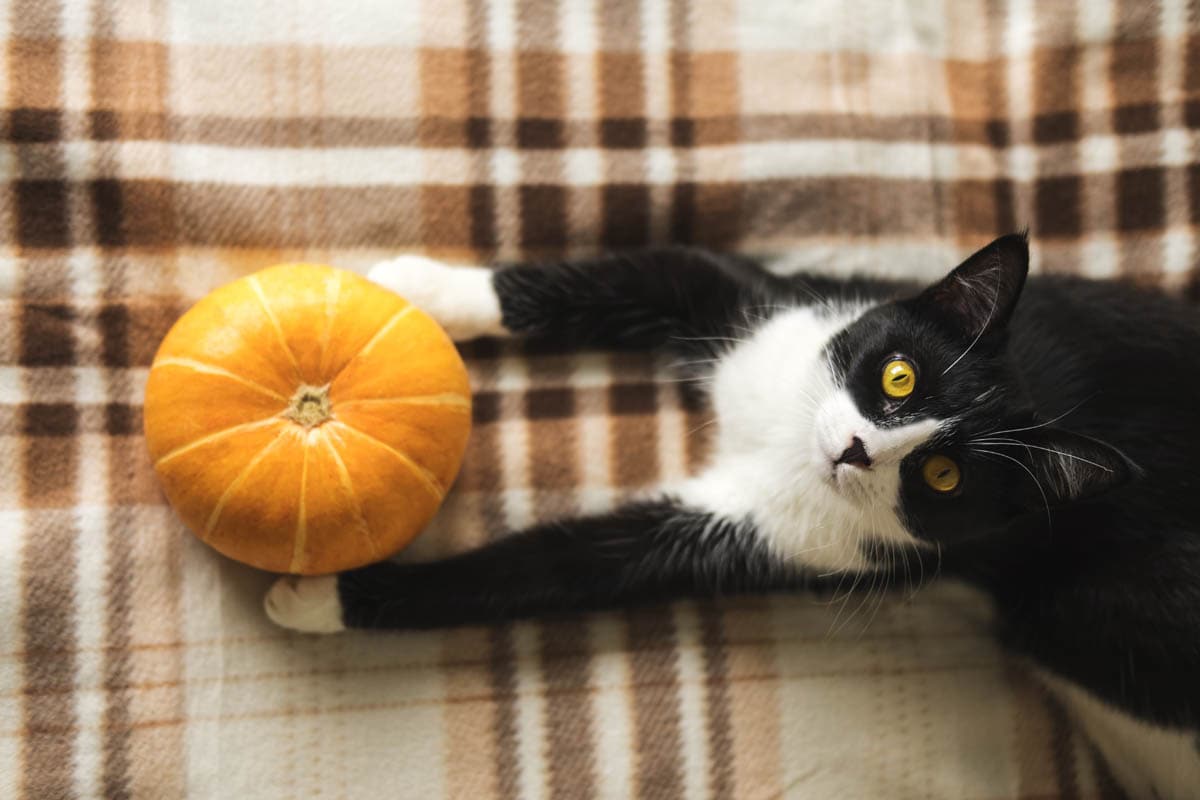Most pet owners wouldn’t think of pumpkin as something a cat would eat, but it has many benefits. It is cheap, easy to prepare, palatable and offers several benefits to cats.
Pumpkin contains high levels of fibre. There are two types of dietary fibre, soluble and insoluble. It also contains antioxidants, beta-carotene, omega fatty acids, iron, magnesium, potassium, phosphorous, zinc as well as vitamins A, B, C, and E.
How much pumpkin can I feed my cat?
Feed 1 tablespoon of canned or mashed pumpkin once a day. Slowly introduced to over a few days as too much fibre too soon can cause stomach upset and bloating in cats.
Most people mix this into their cat’s food; however, you can try it on its own too, many cats quite like the taste of pumpkin.
Health benefits
As with any medical condition, it is ALWAYS important to see your veterinarian to rule out something serious.
Diarrhea: The passage of watery stools; there are many possible causes from benign to life-threatening. Most cats will get the occasional bout of diarrhea in their lifetime.The soluble fibre in pumpkin helps to absorb water and bulk up the stool.
Constipation: A condition characterised by infrequent and difficult to pass stools, usually as a result of them becoming hardened and too dry. You would think that something which works for diarrhea wouldn’t help with constipation, but pumpkin can be used for both. The fibre helps to add bulk to the stool as well as softening it, which helps it to pass more quickly through the body.
Hairballs: Long-haired cats are particularly prone to hairballs, but they can occur in any cat. Again, the fibre in the pumpkin can help the hairball pass through.
Weight loss: Pumpkin is filling, and it is low in calories, with one cup having around 30 calories. Adding one tablespoon to your cat’s diet can help him to feel full without the excess calories.
Weight loss needs to be supervised by your veterinarian; cats can develop fatty liver disease (or hepatic lipidosis) as a result of a reduced intake of food.
Immunity: Vitamins A, C, and E, as well as beta-carotene, are all antioxidants that slow down and prevent damage to cells caused by free radicals. These are toxins produced when our bodies turn oxygen into energy. It is believed that antioxidants neutralise free radicals, reducing cellular damage and helping to reduce diseases such as cancer as well as strengthening the immune system.
Water: Increasing water consumption is especially important for cats who suffer from urinary tract disorders. The purpose of increasing fluids is to help dilute the urine, reducing the chances of urinary stone or crystal formation. Pumpkin is extremely high in water, and a tablespoon added to your cat’s food (especially if he’s eating kibble/dry food) can help to get that extra bit of water in.
How to prepare pumpkin for cats
Pumpkin can either be bought in cans or prepared at home. If you are buying canned pumpkin, don’t use the type for pie fillings as this contains sugar, salt and often spices. Just plain canned pumpkin with nothing added.
At home:
- Remove the skin and seeds, cut into 1-2 inch chunks, boil or steam until soft. This should take around 15-20 minutes.
- Drain, and mash well (or blend if you’re lazy like me).
- The best way to store cooked pumpkin is in ice cube trays in the freezer. As each ‘pumpkin ice cube’ is the equivalent of 1-2 teaspoons, which is the perfect serving size.

